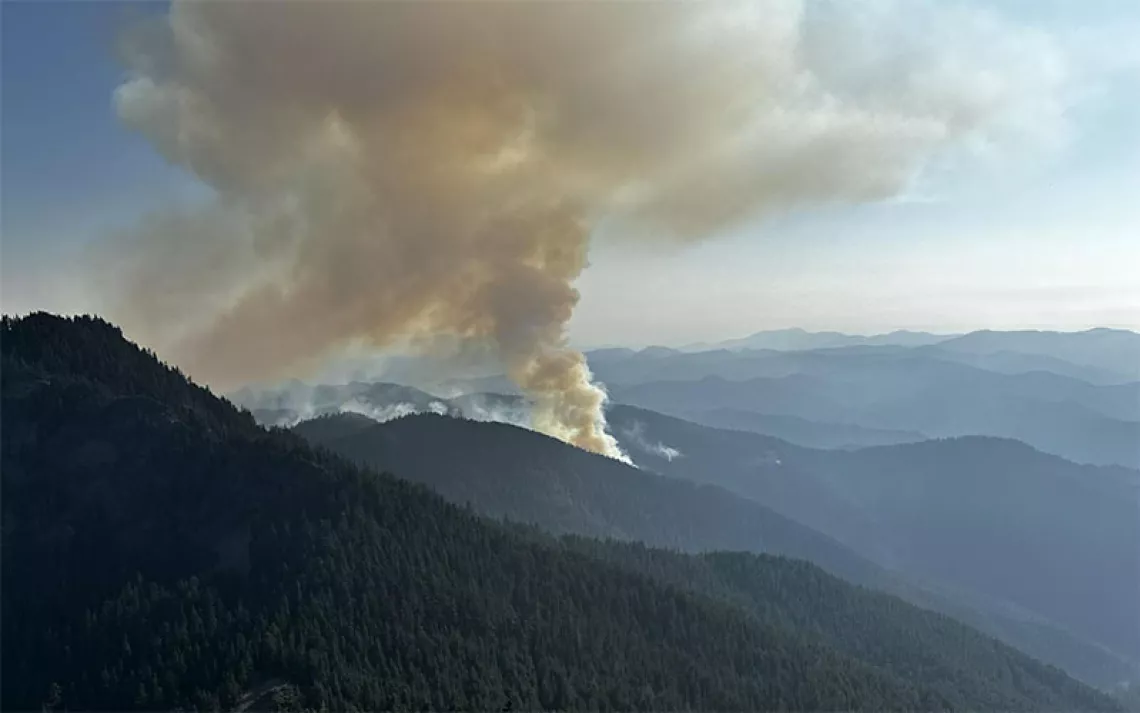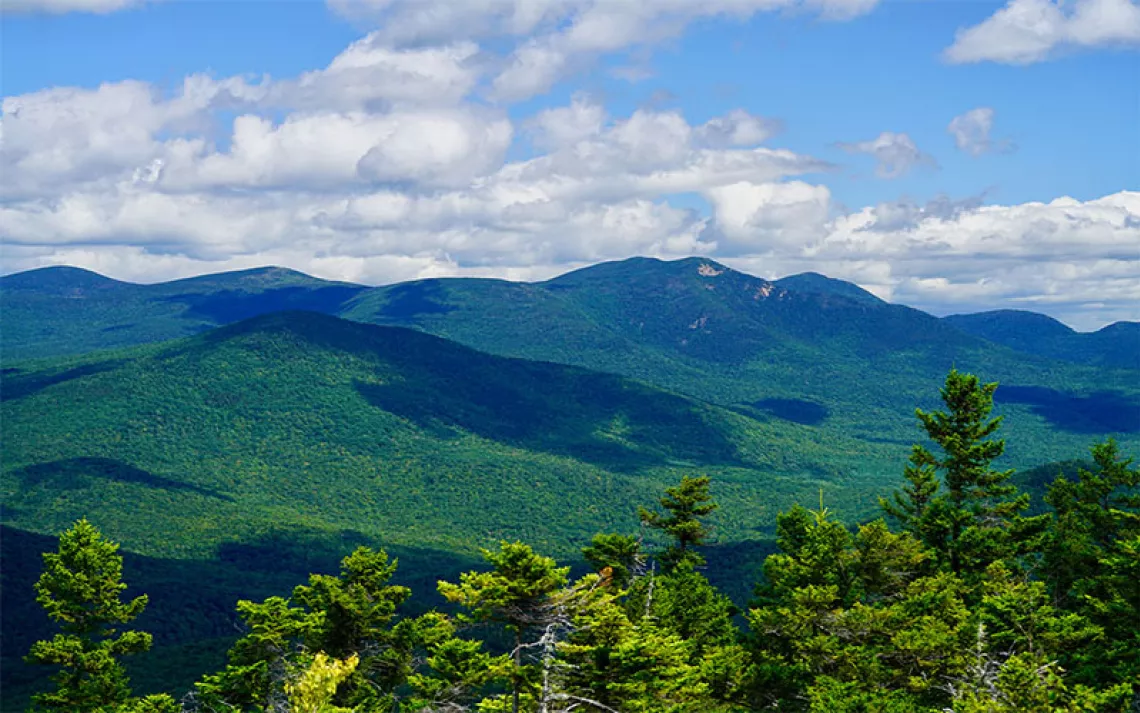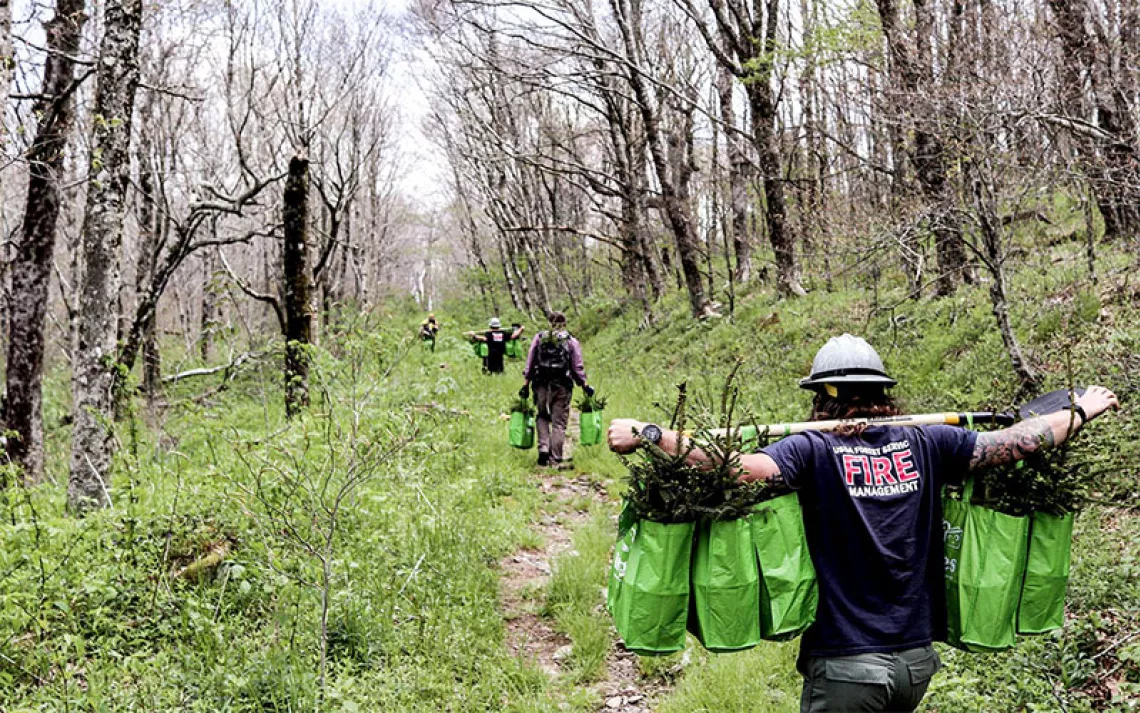Environmentalists Battle Loggers to Protect One Last Old-Growth Forest
In British Columbia, Fairy Creek has become a last stand

Photos courtesy of Stand.Earth
For weeks, activists in the temperate rainforest on Vancouver Island, near the town of Port Renfrew, have been blockading a logging road. On one day, more than 40 logging trucks were turned back. If and when the police finally free the protesters and clear the blockade, it is likely another will take its place. This is the last card being played in an effort to protect one of the last large swaths of old-growth forest left in a Canadian province that, environmentalists contend, has lost its way.
This unprotected and intact watershed on southern Vancouver Island, British Columbia, is known by some as Fairy Creek Valley; for others, it is the traditional and unceded territory of the Pacheedaht, Huu-ay-aht, and Ditidaht First Nations. For loggers, it is timber license #46.
Since August 7, Fairy Creek has been the site of an ongoing series of protests and blockades designed to keep loggers out of the valley. It is a battle that has pitted environmentalists against loggers, BC residents against the provincial government that has ignored their concerns, and even a First Nations chief against an elder. And it’s not going away anytime soon.
The logging company Teal-Jones has been granted permission to clearcut the area. It has signed an agreement with the Pacheedaht First Nation. The area to be logged is only 20 hectares, according to Teal-Jones. The company has gone to court and won injunctions forcing the Royal Canadian Mounted Police to arrest the protesters, remove the numerous camps around the area, and get to its very profitable work of clearcut-logging an old-growth forest. More than 150 have been arrested thus far, and still, they come.
The protesters have scored at least one victory, however small. The three First Nations of the region released a joint statement on June 5 requesting that the provincial government grant a two-year deferral of logging old growth while it continues resource operations in other areas.
“Our three Nations look forward to building a future based on respectful nation-to-nation relationships with other governments that are informed by Indigenous history, Indigenous knowledge, Indigenous rights, and Indigenous priorities,” said Chief Councilor of the Pacheedaht First Nation Jeff Jones. “We ask that all peoples both Indigenous and non-Indigenous learn and move forward together and that by working together we can realize a future that is fair, just, and equitable.”
A statement from Teal-Jones read, in part, that it “acknowledges the ancestral territories of all First Nations on which we operate and is committed to reconciliation.”
The request for deferral, though, has done nothing to stop the protesters, who say it doesn't go far enough. Fifteen have already been arrested for acts of civil disobedience since June 5.
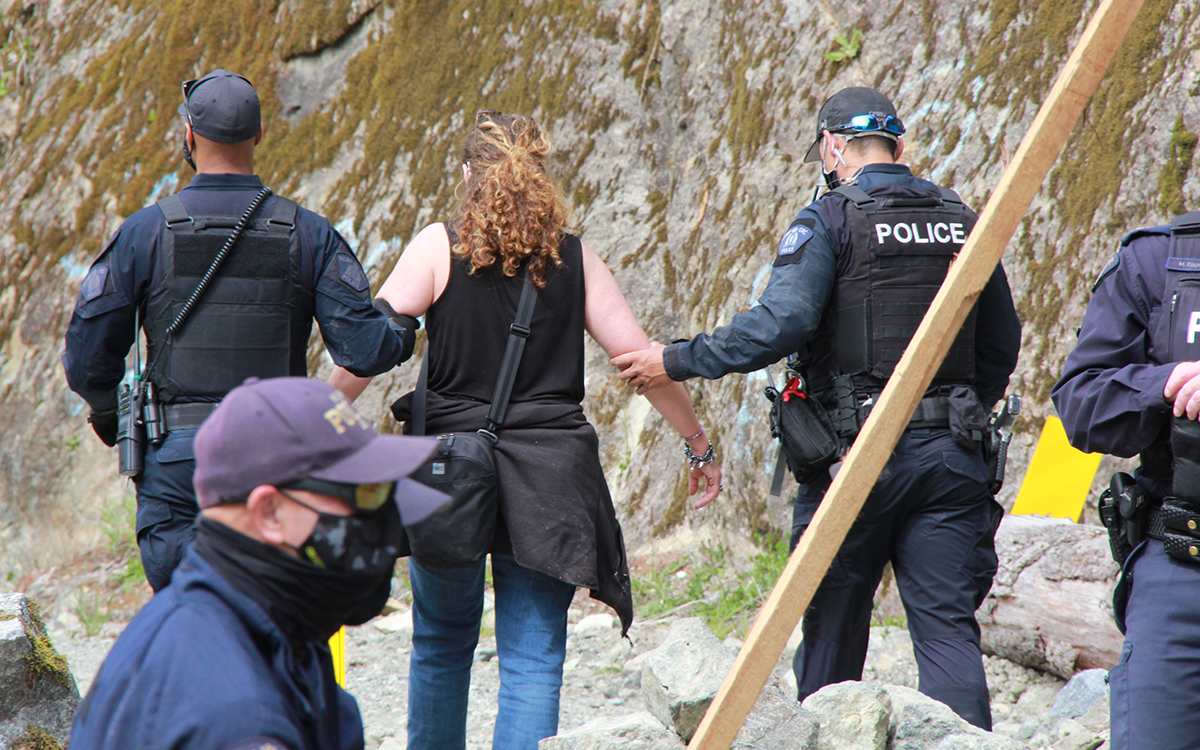
*
Joshua Wright, a 17-year-old organizer from Washington State and a spokesperson with the Rainforest Flying Squad, first noticed there were approvals to build logging roads in the area. He reached out to the activist community in Victoria, BC, and soon after started working with the Rainforest Flying Squad to organize the blockades.
Wright says Fairy Creek is worth fighting for because it’s all that is left.
“Fairy Creek, in particular, is the largest old-growth forest outside of a park on southern Vancouver Island, and it's also the last intact watershed outside of the park on southern Vancouver Island,” he says. “It's this one little valley that’s managed to avoid the entire wave of industrial logging. The central part of it is protected as a wildlife habitat area, but the headwaters, which contain some of the oldest yellow cedar trees that we know of, is open to logging. Teal-Jones has approved a road that would go straight into the headwaters through a tree that we think is probably about 1,500 to 2,000 years old.”
The Rainforest Flying Squad is calling for more to join the blockades and defend this last stand.
The situation is very similar to another so-called war in the woods that occurred in the Clayoquot Sound region of Vancouver Island up the coast from Fairy Creek. In the early 1990s, thousands of protesters set up camps and protested logging in that area near the town of Tofino in what was then the largest act of civil disobedience in Canadian history.
Tzeporah Berman, Stand.Earth International programs director, was at the Clayoquot protests three decades ago. Last week, she was arrested at the Fairy Creek blockades. Back in the early 1990s, the provincial government said it would do something about protecting old-growth forests and repeated the same message during the run-up to the most recent provincial election in British Columbia.
Nothing seems to change, says Berman, except now we are also in the middle of a global climate emergency.
“I'm finding the whole experience horrifying,” she says. “The idea that we can be facing a global ecological collapse and a climate emergency that is recognized by our government. And the urgency is continually repeated by scientists. That these last remnants of at-risk old growth are still on the chopping block is absurd.”
“There were a lot of similarities to 30 years ago in that it was one of the only times that I have ever personally experienced this coming together of people from all walks of life,” Berman says. “At Fairy Creek, I met sawmill workers and teachers and scientists and business leaders, very similar to the blockades in Clayoquot Sound where you just saw people of all ages, all walks of life, Indigenous leaders and others, coming together with a sense of urgency and common purpose. It's hard to ignore the fact that you're also seeing this happen under another BC NDP (New Democratic Party) government which has promised to protect old-growth forests.”
Although the circumstances are similar, the difference, says Wright, is that there is no time left. “If we don't protect old-growth forests now, then they're all going to be gone in a matter of about a decade,” he says.
*
The forest industry is a cornerstone of the British Columbia economy, contributing an estimated $12.9 billion and employing tens of thousands of people. A few years ago, there appeared to be some momentum for change when the government commissioned a review of the province’s old-growth forest policy, led by two foresters, Al Gorley and Garry Merkel. The final report, A New Future for Old Forests, was released last spring. In the report, the authors lay out 14 recommendations to protect British Columbia’s old-growth forests. Premier John Horgan committed to implementing those recommendations. Though not yet.
Merkel says the report represents a paradigm shift in the way the province views and manages its old-growth forests.
“We need to move from managing for resources, particularly timber, to managing for ecosystem health,” Merkel explains. “We need to stop thinking of old-growth forests as renewable because many of them aren't. Once you've cut them, you've effectively mined them. The forest itself is living in an ecosystem that's thousands of years old.”
Andrea Inness, of Ancient Forest Alliance (AFA), says that BC Premier John Horgan’s commitments to protect the forest have gone nowhere. AFA would like an immediate logging moratorium on the most at-risk old-growth forests in the province.
“That's number one,” she says. “Number two is that, yes, there would be impacts on the forest sector. And that's where a transition strategy and funding come into play. We see no evidence that the province is working on either of those things at this point.”
While politicians dither, more old-growth forests are being logged, says Will O’Connell, an independent trail builder and filmmaker who was one of the first on the scene last August when he got word from Wright.
“It’s been 30 years since the (Clayoquot Sound) war in the woods, and there have been no changes to our environmental regulations,” says O’Connell. “Actually, they've been stripped down, at the same time as we're developing a better understanding of the complexity of our ecosystems and the importance of them in terms of regulating our climate and our community watersheds and things like that, and we're recognizing the scarcity of our forests.”
Berman says environmental organizations have been arguing for decades that governments need to recognize the protection of old-growth forests as critical to addressing climate change. But, she says, governments have instead continued to support industrial extraction policies such as logging in areas like Fairy Creek.
“Climate policy, climate targets, emissions targets have been very siloed from both forest policy, and also actually from energy policy,” Berman explains. “That's why we see these fights over Line 3, Keystone, and Trans Mountain [oil sands pipelines], even though we have elected decision-makers that are saying they're moving on climate. This is why we see a forest policy that ignores the climate crisis and the important role that our remaining old-growth forests play both sequestering carbon and maintaining ecosystem services and resiliency in the climate era.”
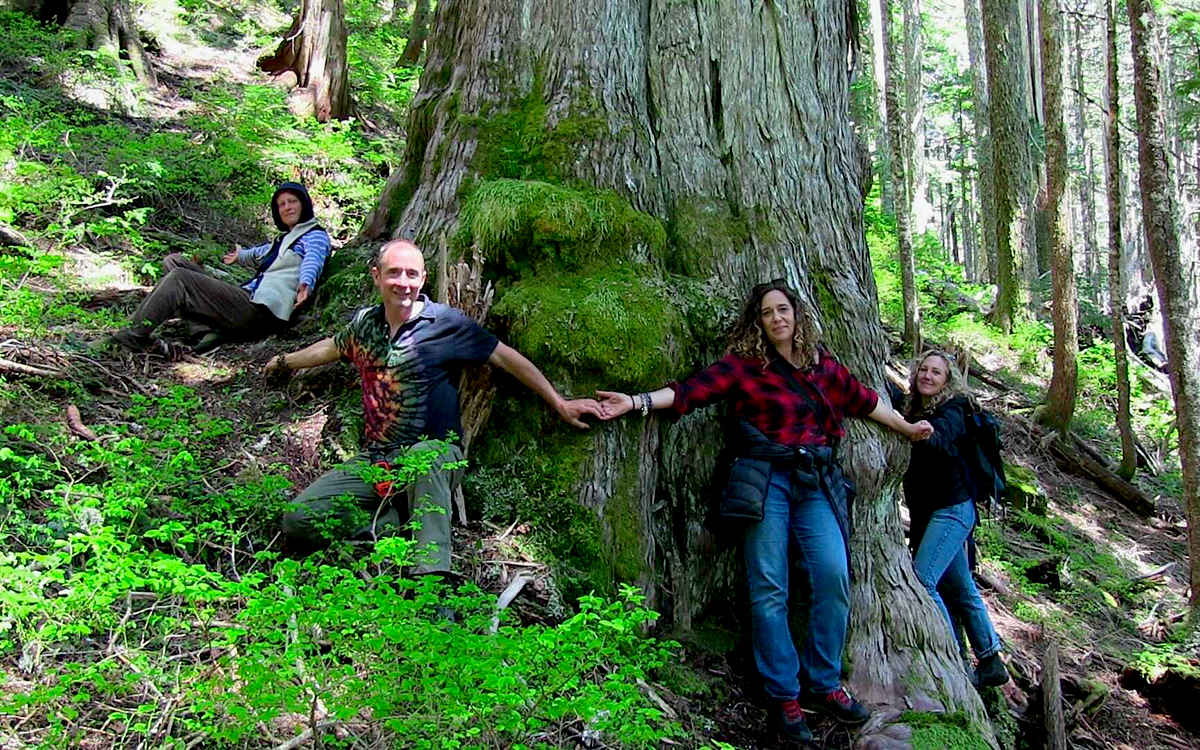
*
Many of these extractive resource projects share a common pattern: They take place on Indigenous First Nations land. That’s no different at Fairy Creek, which adds an element of complexity that caught the protesters off-guard in the early days of the camps last summer.
When the protesters first set up on Pacheedaht land last fall, they did so without permission. That was a mistake, O’Connell admits.
“We didn't do a great job of taking the time to talk to the (Pacheedaht) community members and get permission to be on their land, and do the proper protocol,” O’Connell says, explaining that the protesters were “called out pretty hard” by Indigenous peoples in Victoria and all over Vancouver Island. “It redirected the movement a lot to recognizing that such an important part of any social justice movement is considering Indigenous laws and respecting their culture and these communities.”
The Pacheedaht had signed an agreement in support of logging in the area, which provides revenue to its people. Pacheedaht hereditary chief Frank Queesto Jones and chief councilor Jeff Jones told the protesters to pack up and go home.
“Our rightful ownership and management of forest resources within our Territory need to be acknowledged,” read a statement, signed by Frank Queesto Jones and Jeff Jones. “All parties need to respect that it is up to Pacheedaht people to determine how our forestry resources will be used. We do not welcome or support unsolicited involvement or interference by others in our Territory, including third-party activism. Pacheedaht needs to be left in peace to engage in our community-led stewardship planning process so that we can determine our own way forward as a strong and independent Nation.”
Premier Horgan cited the logging agreement, not only with the chief of the Pacheedaht band council but also the hereditary chief, when pressed on the Fairy Creek issue.
Pacheedaht elder Bill Jones, a visible and vocal Indigenous protector of Vancouver Island's old growth, challenged the agreement. He grew up in the area and spent much time during his childhood in and around the Fairy Creek Valley. And he is firmly against logging the area.
“He has always been trying to fight for more protection for growth on his land. And I think he's taken the opportunity to become a leader,” O’Connell says.
In a statement supporting the protesters, Jones disputed the claim that Frank Queesto Jones is the hereditary chief of the Pacheedaht.
“I implore people to continue to stand with me to protect our forests from destruction and colonialism because we need allies on the ground to stop old-growth logging in my home territory and for my future generations and relatives,” he wrote.
Berman says the dispute over Fairy Creek is complex because it is so important for Indigenous peoples to be at the table when it comes to what happens on their unceded territory. It’s something that occurred at Clayoquot Sound and continues to play out in other areas across the province, when resource extraction practices—whether it be logging, mining, or pipelines—occur on First Nations territory.
“Both the government and the logging industry tried in Clayoquot Sound to convince the Nuu-chah-nulth First Nation to oppose the blockades and to sign deals that would justify the continued large-scale clearcut logging of the old-growth rainforests,” Berman explains. “And the Nuu-chah-nulth resisted that. While they didn't publicly support the blockades, they didn't condemn us either. They were able to negotiate agreements in the end that gave them decision-making authority over much of their traditional territories as well as ensuring protection of the intact watersheds.”
Both Bill Jones in his statement and Berman point to the fact that First Nations in British Columbia have been put in untenable situations. It’s a position supported by the Union of BC Indian Chiefs, which has called for Premier Horgan to implement the 14 recommendations from the independent panel report.
“What governments and corporations need to do is to take a step back and view old-growth forests not as commercialized products to be harvested and sold but as the bedrock foundations of a healthy, biodiverse environment that First Nations have been stewards over since time immemorial,” stated Grand Chief Stewart Phillip, president of the Union of BC Indian Chiefs, in a statement. “Old-growth forests help sustain our livelihoods and possess incalculable cultural and spiritual value that is far from pecuniary.”
Berman says many Indigenous leaders joined the blockades in Fairy Creek, but acknowledges the agreement with the logging industry and the government.
“I understand why they would do that,” she explains. “These are communities that have high unemployment, high suicide rates. They need urgent support. I think the core question to the government is, ‘Did anyone go to these Nations and say would you like to protect the old-growth forests? Can we support you in doing that?’ Well, of course, they didn’t.”
According to Berman, the provincial government is blaming its inaction on deferring the logging of at-risk old-growth forests on the need to consult with First Nations.
“It's not consultation if the trees are falling while the discussions are going on,” Berman noted. She says the government should listen to the science, defer the remaining at-risk old growth and engage in extensive consultations with Indigenous nations on reforming forestry in the region and permanently protecting those areas.
It's a policy that an overwhelming number of British Columbia residents support, according to a recent Sierra Club BC poll. The poll shows that 85 percent want action for old-growth forests. Only 16 percent think the provincial government has followed through on its promises.
*
On June 9, the provincial government announced that it would honor the June 5 request, made by the Pacheedaht, Huu-ay-aht, and Ditidaht First Nations, to defer logging for two years. In a statement, Premier John Horgan said that the move was consistent with the government’s commitments to reconciliation and to protecting old-growth forests.
“Reconciliation with Indigenous peoples and protecting the environment are top priorities for our government. We believe they must go hand in hand,” Horgan stated.
But will the deferral stop road building into the Fairy Creek headwaters?
Not nearly enough, according to the Rainforest Flying Squad. The deferral only impacts one kilometer of approved roadbuilding at the headwaters. But in the adjacent areas of intact rainforest, there are 40 hectares of old-growth logging and over five kilometers of roadbuilding approved. According to the group, this larger, intact area is “the home of an irreplaceable ecosystem, which is essential habitat for bears, elk, and other large mammals, which are endangered by the continued fracturing and erosion of their habitat.”
“If the province is only protecting the Fairy Creek watershed, then British Columbia is basically deferring one kilometer of roadbuilding for two years, and that’s it,” explained Joshua Wright. “They’re not stopping any of the roadbuilding or old-growth logging in the connected, intact forests just outside of the basin of Fairy Creek watershed.”
The Ditidaht, Huu-ay-aht, and Pacheedaht statement asked that forestry operations in other parts of their territories be allowed to proceed during the two-year deferral while work is underway on “developing and implementing world-class integrated resource management plans.” Specifics are scarce.
The Rainforest Flying Squad and Bill Jones issued a joint statement that while the deferral is a step in the right direction, they remain concerned that it allows for the status quo of old-growth logging to continue unabated across the territory.
“We have yet to see any precise maps or confirmation that this deferral will prevent roadbuilding or active logging of old growth,” the statement read.
Until there is a resolution that includes “the entire 2,080-hectare Fairy Creek Rainforest, not just the old growth within the watershed,” protesters are committed to blockading that logging road and protecting Fairy Creek.
Bill Jones, for one, isn’t going anywhere.
“I will continue standing for the land until I am dead,” Jones said in his statement. “I feel like an old-growth tree is worth the same as my life.”
 The Magazine of The Sierra Club
The Magazine of The Sierra Club

